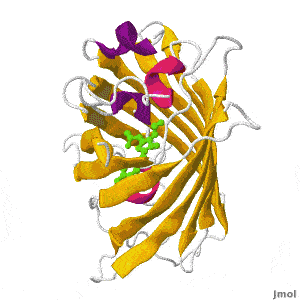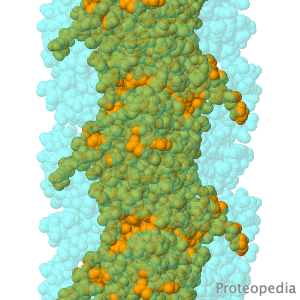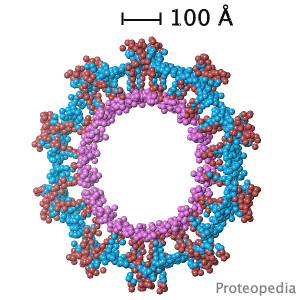Main Page
From Proteopedia
| Line 1: | Line 1: | ||
| - | <table id="tableColumnsMainPage" style="width:100%;border:2px solid #ddd;border-collapse: collapse;table-layout: fixed; "> | ||
| - | <tr><td colspan='3' style="background:#F5F5FC;border:1px solid #ddd;"> | ||
| - | |||
| - | <!-- NEW WRAPPER to contain the float --> | ||
<div style="overflow:auto;"> | <div style="overflow:auto;"> | ||
| + | <table id="tableColumnsMainPage" style="width:100%; border:2px solid #ddd; border-collapse: collapse; table-layout: fixed; "> | ||
| + | <tr><td colspan='3' style="background:#F5F5FC; border:1px solid #ddd;"> | ||
<div style="top:+0.2em; font-size:1.2em; padding:5px 5px 5px 10px; float:right;">'''''ISSN 2310-6301'''''</div> | <div style="top:+0.2em; font-size:1.2em; padding:5px 5px 5px 10px; float:right;">'''''ISSN 2310-6301'''''</div> | ||
| Line 14: | Line 12: | ||
<b>Proteopedia</b> presents this information in a user-friendly way as a '''collaborative & free 3D-encyclopedia of proteins & other biomolecules.''' | <b>Proteopedia</b> presents this information in a user-friendly way as a '''collaborative & free 3D-encyclopedia of proteins & other biomolecules.''' | ||
</span> | </span> | ||
| - | |||
| - | </div><!-- /overflow:auto wrapper --> | ||
</td></tr> | </td></tr> | ||
| Line 39: | Line 35: | ||
<tr style="font-size: 1.0em; text-align: center;"> | <tr style="font-size: 1.0em; text-align: center;"> | ||
| - | <td style="padding: 10px;> | + | <td style="padding: 10px;"> |
<p>[[Help:Contents#For_authors:_contributing_content|How to add content to Proteopedia]]</p> | <p>[[Help:Contents#For_authors:_contributing_content|How to add content to Proteopedia]]</p> | ||
<p>[[Proteopedia:Video_Guide|Video Guides]]</p> | <p>[[Proteopedia:Video_Guide|Video Guides]]</p> | ||
| Line 45: | Line 41: | ||
</td> | </td> | ||
| - | <td style="padding: 10px;> | + | <td style="padding: 10px;"> |
<p>[[I3DC|About Interactive 3D Complements - '''I3DCs''']]</p> | <p>[[I3DC|About Interactive 3D Complements - '''I3DCs''']]</p> | ||
<p>[[Proteopedia:I3DC|List of I3DCs]]</p> | <p>[[Proteopedia:I3DC|List of I3DCs]]</p> | ||
<p>[[How to get an I3DC for your paper]]</p> | <p>[[How to get an I3DC for your paper]]</p> | ||
| - | |||
</td> | </td> | ||
| - | <td style="padding: 10px;> | + | <td style="padding: 10px;"> |
<p>[[Teaching strategies using Proteopedia]]</p> | <p>[[Teaching strategies using Proteopedia]]</p> | ||
<p>[[Teaching_Scenes%2C_Tutorials%2C_and_Educators%27_Pages|Examples of pages for teaching]]</p> | <p>[[Teaching_Scenes%2C_Tutorials%2C_and_Educators%27_Pages|Examples of pages for teaching]]</p> | ||
| Line 71: | Line 66: | ||
</td></tr> | </td></tr> | ||
</table> | </table> | ||
| + | </div> | ||
Revision as of 16:25, 30 September 2025
|
ISSN 2310-6301
As life is more than 2D, Proteopedia helps to bridge the gap between 3D structure & function of biomacromolecules Proteopedia presents this information in a user-friendly way as a collaborative & free 3D-encyclopedia of proteins & other biomolecules. | ||||||||
| Selected Research Pages | In Journals | Education | ||||||
|---|---|---|---|---|---|---|---|---|
|
|
|
||||||
|
How to add content to Proteopedia Who knows ... |
Teaching strategies using Proteopedia |
|||||||
| ||||||||




